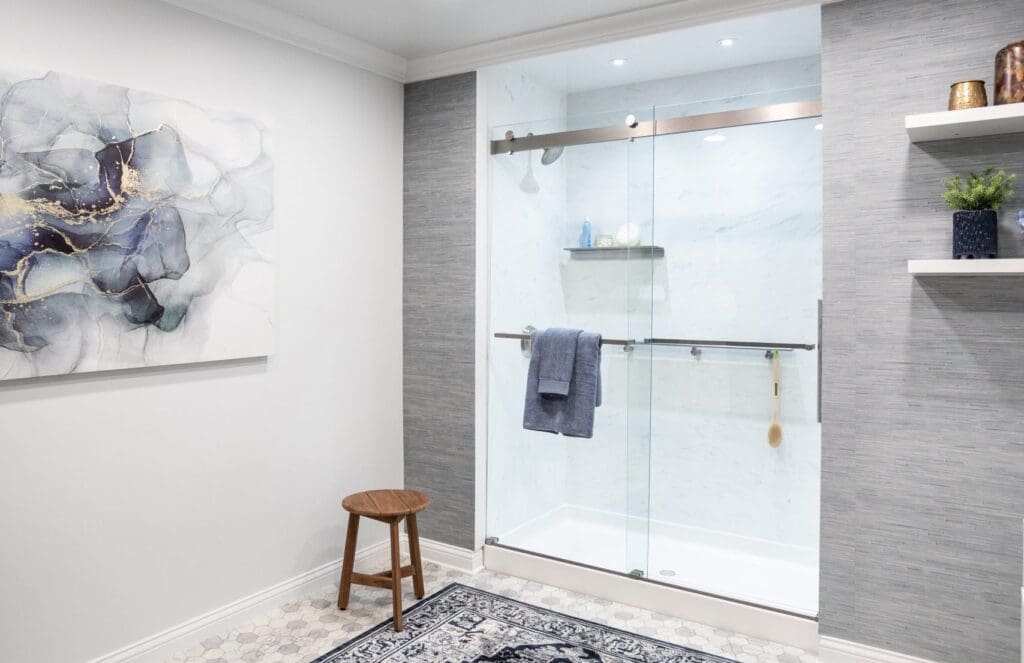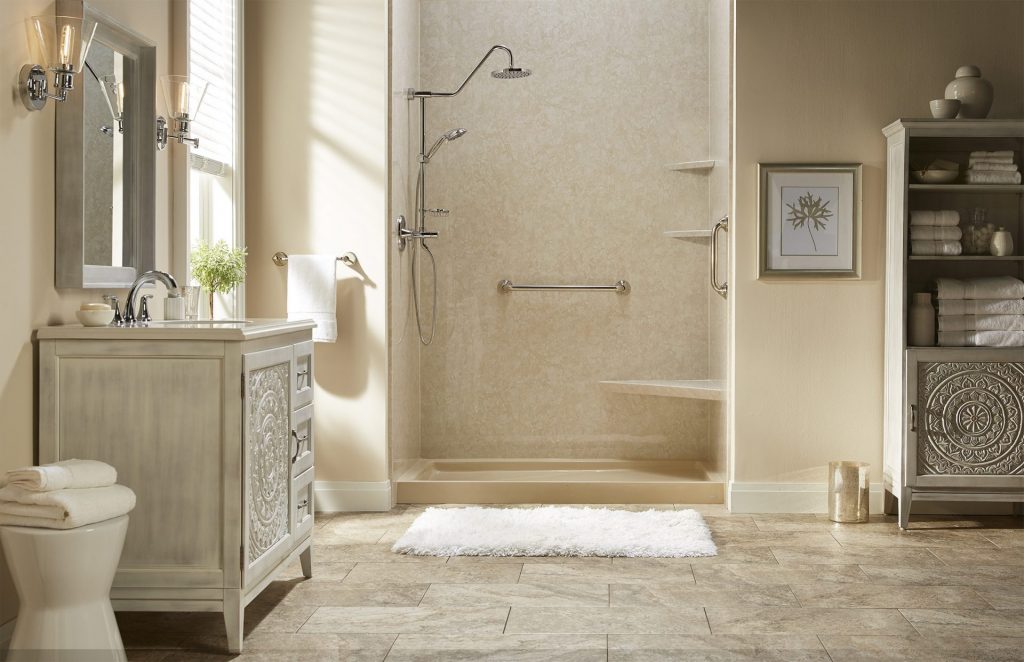Planning a Tub-to-Shower Conversion: What to Expect
Thinking about upgrading your bathroom by replacing your old bathtub with a sleek, walk-in shower? You’re not alone. Whether for convenience, accessibility, or resale value, many homeowners are making the switch. But before the first tile is laid, there are key decisions and preparations that will set your project up for success.
This guide walks you through everything you need to consider before converting your tub into a shower—from layout and design choices to budget planning and contractor selection.

Why More Homeowners Are Saying Goodbye to the Tub
If you’re wondering whether replacing your bathtub is the right move, you’re in good company. More and more homeowners are ditching their tubs in favor of stylish, practical walk-in showers—and it’s easy to see why. Here are some of the top reasons people are making the switch:
- Accessibility: Walk-in showers are easier to use and safer, particularly for aging adults or those with mobility concerns. NAHB reports that 80% of remodelers are seeing more aging-in-place upgrades.
- Modern Design: Frameless glass, large-format tile, and rainfall showerheads create a spa-like experience that modernizes any bathroom.
- Space Efficiency: Showers often open up a room visually, especially in small bathrooms, and allow for better storage solutions.
- Home Value: According to the 2023 Cost vs. Value Report, a midrange bathroom remodel averages a 66% ROI at resale.
Step-by-Step: Planning Your Tub-to-Shower Conversion
1. Assess Your Bathroom Layout
Start by evaluating whether your existing tub space is suitable for a shower installation. Most tubs are 60 inches wide—ideal for a standard shower base. Take note of the following:
- Size: Ensure there’s enough width, depth, and ceiling height.
- Plumbing: Are your current drain and water lines compatible with a shower system?
- Wall Structure: Will the walls support shelves, grab bars, or glass enclosures?
If you’re unsure, a contractor can help assess the space during a consultation.
2. Define Your Priorities
Take a moment to really think about how you plan to use your new shower. Are you dreaming of a spa-like retreat with stylish finishes, or is your focus more on function and everyday convenience? Consider whether a curbless entry is essential—especially if you’re thinking about long-term accessibility or have mobility needs. You’ll also want to decide on the overall look and feel. Do you envision sleek glass doors, or are you leaning toward a more open, doorless design?
And don’t forget the extras. Built-in benches, storage niches, shelves, or grab bars can make a big difference in both comfort and safety. Jot down your preferences and must-haves before meeting with a contractor. Having a clear wishlist will help guide the conversation and ensure you get solutions tailored to your lifestyle, space, and budget.
3. Set a Realistic Budget
Conversion costs vary widely depending on design choices, finishes, and labor. Here’s a rough pricing overview:
| Type of Shower | Estimated Cost |
| Prefab Shower | $700 – $3,000 |
| Walk-In Shower | $1,150 – $8,000 |
| Custom Tile | $3,500 – $15,000 |
| Barrier-Free | $6,000 – $12,000 |
According to Fixr, the national average sits around $7,500. Always add a 10–15% buffer for unexpected issues such as mold, water damage, or subfloor repairs.
4. Know the Hidden Costs
Not all expenses are visible upfront. Common hidden costs include:
- Water Damage Repairs: Mold, mildew, or rotted subflooring behind an old tub can add $1,500–$9,000 to your bill.
- Permit Fees: Building permits are often required and vary by location—from $200 to over $2,000.
- Inspection Delays: Some areas require mid-project inspections, which can stall progress if not properly scheduled.
- Tile Prep and Waterproofing: Skimping here risks long-term damage. Proper waterproofing membranes and sealing are essential.
5. Choose a Contractor You Trust
Unless you’re experienced in plumbing, waterproofing, and construction, a professional is your best bet. Ask potential contractors:
- Are they licensed and insured?
- How many tub-to-shower conversions have they completed?
- Do they offer a warranty on workmanship?
- Will they handle permits and inspections?
Use platforms like Angi or HomeAdvisor to find top-rated professionals in your area.
6. Select Your Materials and Design Elements
- Shower Base: Acrylic and fiberglass are budget-friendly and low-maintenance. Tile bases offer a custom look but require more upkeep.
- Wall Surrounds: Solid-surface panels (e.g., cultured marble or acrylic) simplify cleaning, while ceramic or porcelain tile offers rich textures and design flexibility.
- Glass Doors: Choose sliding, pivot, or frameless options depending on space and budget. Walk-in (doorless) showers offer a minimalist feel.
- Fixtures: Go beyond basics. Consider rain heads, hand-held sprayers, body jets, and digital controls.
- Storage Solutions: Recessed niches, corner shelves, or built-in benches increase functionality and keep your shower clutter-free.
7. Prepare for the Construction Phase
Once your materials are ordered and your contractor is on the schedule, it’s time to get ready for the actual installation process. A standard tub-to-shower conversion typically spans about five working days, though more complex projects can stretch to a week or more. Here’s a general idea of what that timeline might look like:
- Day 1: Demolition and safe disposal of the existing tub and surrounding wall materials.
- Day 2: Plumbing adjustments, drain relocation (if needed), and inspection of the subfloor and framing for any necessary repairs.
- Day 3–4: Installation of the new shower pan, waterproofing system, wall surrounds or tile, and fixtures such as showerheads or niches.
- Day 5: Final details, including sealing, caulking, grouting (if applicable), and cleanup. The contractor may also conduct a walkthrough and inspection at this stage.

While the construction itself may last five days, it’s important to plan for the full project timeline, which often starts weeks before the demo even begins. Many reputable contractors book out several weeks—or even months—in advance, and some materials like custom glass doors, tile, or solid-surface panels may have long lead times. Make sure to discuss estimated delivery and start dates early on to avoid delays.
Also, keep in mind that your new shower might not be immediately ready for use when the work wraps up. Materials such as caulk, grout, or waterproof membranes typically require 24 to 48 hours to cure properly. Rushing that drying time can compromise waterproofing or cause finishes to fail prematurely.
In short, while the physical construction is relatively quick, the entire process from planning to first shower can span several weeks. Building in that buffer will help reduce stress and ensure your finished shower performs beautifully for years to come.
Final Tips Before You Begin
Before the renovation kicks off, it’s a good idea to make sure you have another bathroom available—especially if this is your only one. You’ll also want to have a quick chat with your contractor about what to expect during the process. Ask about their cleanup routine, what time they plan to start and finish each day, how they’ll manage dust or noise, and which areas of your home they’ll need access to.
It’s also worth confirming whether debris removal is included in your estimate. You don’t want any surprises when it comes time to haul out the old tub and construction materials. While you’re at it, take some before-and-after photos—you’ll be glad you did. Not only are they great for your own records, but they can really help show off the transformation if you ever decide to sell.
Lastly, take a few minutes to go over the fine print in your contract. Double-check the payment schedule, what materials are being used, and how changes to the project will be handled. A little clarity upfront goes a long way toward avoiding misunderstandings later.
Ready to Start a Tub-to-Shower Conversion?
At BathWise, we understand just how much a tub-to-shower conversion can breathe new life into your bathroom while also making it more functional, safe, and visually appealing. With thoughtful planning, the right team, and a clear budget, you’ll be enjoying your new shower before you know it.
Have questions or want a personalized quote? Contact our team today to schedule a consultation and start your bathroom transformation.



